Gyms have begun admitting children as young as 2.5 years old. Joyce Yip visits a bunch of training centers where under-10s are learning to lift weights, scale warped walls, and figure their way around the intricacies of Muay Thai boxing.
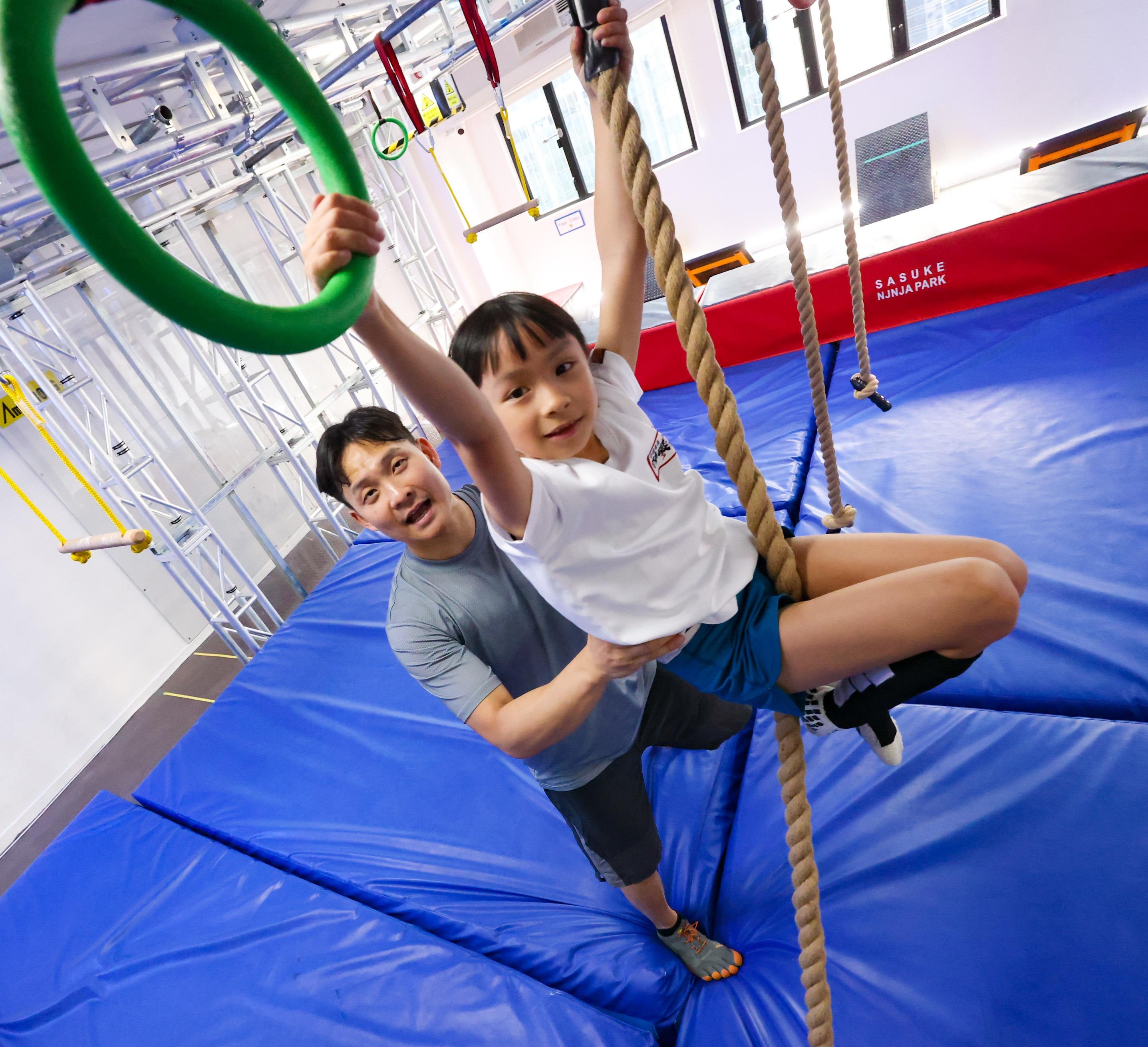 Chung Hin-yeung (left), co-founder and head coach of Sasuke Ninja Park, with his star
student, 8-year-old Mila.
Chung Hin-yeung (left), co-founder and head coach of Sasuke Ninja Park, with his star
student, 8-year-old Mila.
In July, Chung Hin-yeung - co-founder and head coach of what's probably Hong Kong's first obstacle gym, Sasuke Ninja Park - brought his student, 8-year-old Mila, to the Ultimate Ninja Athlete Association series 8, held in Orlando, Florida. The idea, Chung says, was to let his young protege experience her first taste of failure.
The UNAA championship is a race against time through an obstacle course comprising monkey bars, balance beams, a warped wall, ring swings and more such. Chung says Mila is exceptionally good at the sport - so much so that she needs to learn to accept that others could be better.
"A lot of my students master the obstacles at my gym and think they have it all figured out," he continues. "Mila, especially, is a perfectionist. I wanted her to enter an international competition so she could face her fears and failures."
ALSO READ: Dance classes catch on as fitness craze
At a time when adults are getting increasingly particular about their choice of workouts, can children be far behind? Over the past five years or so, gyms catering to adults have begun admitting children as young as 2.5 years old, putting them through exercise regimens that are far more demanding than what it takes to learn the basic moves involved in gymnastics, soccer or karate. The idea is to encourage the habit of doing regular exercise as well as cultivate discipline and resilience early on. Motivating children into giving every fitness goal their best shot also figures.
Sasuke Ninja Park takes in 4-year-olds. Chung says the two strategies that work best when it comes to training small children are: breaking down the physical exercises into smaller units of movements, and keeping the learners' morale high. One of the first things children learn in his class is how to let go and fall on one's back.
"They can't swing on the rings? Then how about they just hold onto them and get used to hanging in the air?" Chung favors the slow and steady approach when he's working with kids. "At the end of the day, they don't need to achieve anything. I only care that they've tried their best."
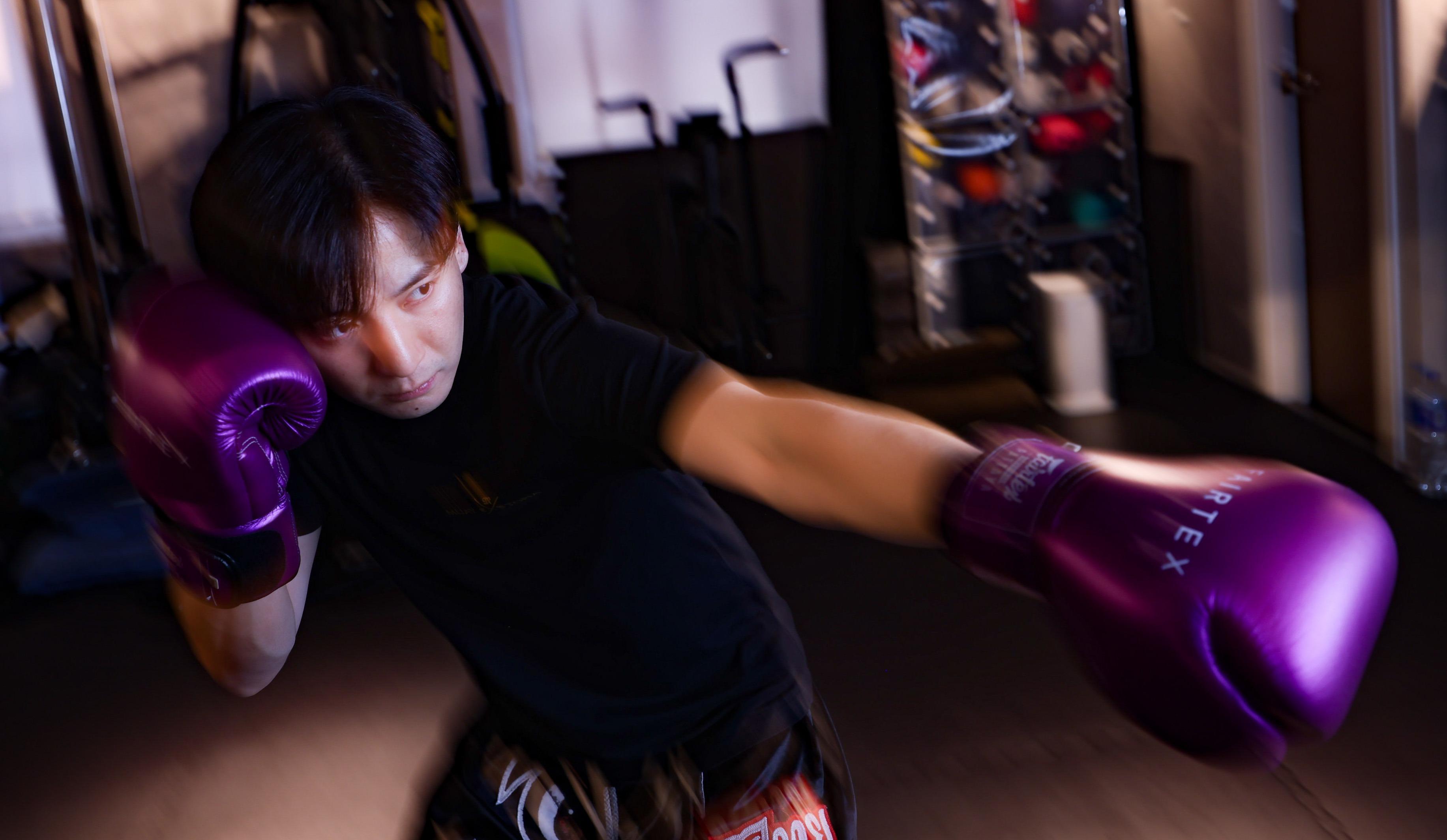 Vincent Wong, co-owner of Muaytopia
MuayThai.Fitness, teaches a toned-down
version of the martial-art form to his young students.
Vincent Wong, co-owner of Muaytopia
MuayThai.Fitness, teaches a toned-down
version of the martial-art form to his young students.
A combination of gymnastics, rock climbing and obstacle training improves children's confidence, flexibility, muscle and bone density, mobility and, most importantly, helps them to be more comfortable in their own bodies. Chung adds that it makes sense to start at age 4 as that's when children are, physically and cognitively, ready to receive fitness training. Starting any earlier could be detrimental to a child's development.
"Unless children are training to become professional athletes, (engaging them in) sports is a way of training their minds," Chung adds. "And obstacle training is the best way to help them overcome fears and failures."
How young is too young?
Meanwhile, in Espada, a Brazilian jujitsu gym in Sheung Wan, instructor Joyce Ip is trying to teach the art of "flip the turtle" to a bunch of tiny tots. Trainees need to be nimble-footed, all the way down to the tip of their toes, to be able to pull off the feat. Ip also teaches CrossFit, a specially curated fitness program that admits kids even younger than Espada's 3-year-olds, at Asphodel Fitness and Performance.
While the very idea of putting 2.5-year-olds through a high-intensity fitness regime, comprising weightlifting and aerobic exercises, might sound preposterous to many, the trainers at Asphodel say that there is no risk involved. Weights start at 1.5 kilograms and the students, working out under strict supervision, must earn their way up. Each 45-minute class is made up of tasks and games that focus on developing healthy movements and an awareness of one's body.
ALSO READ: Riding the ‘she sports’ fervor
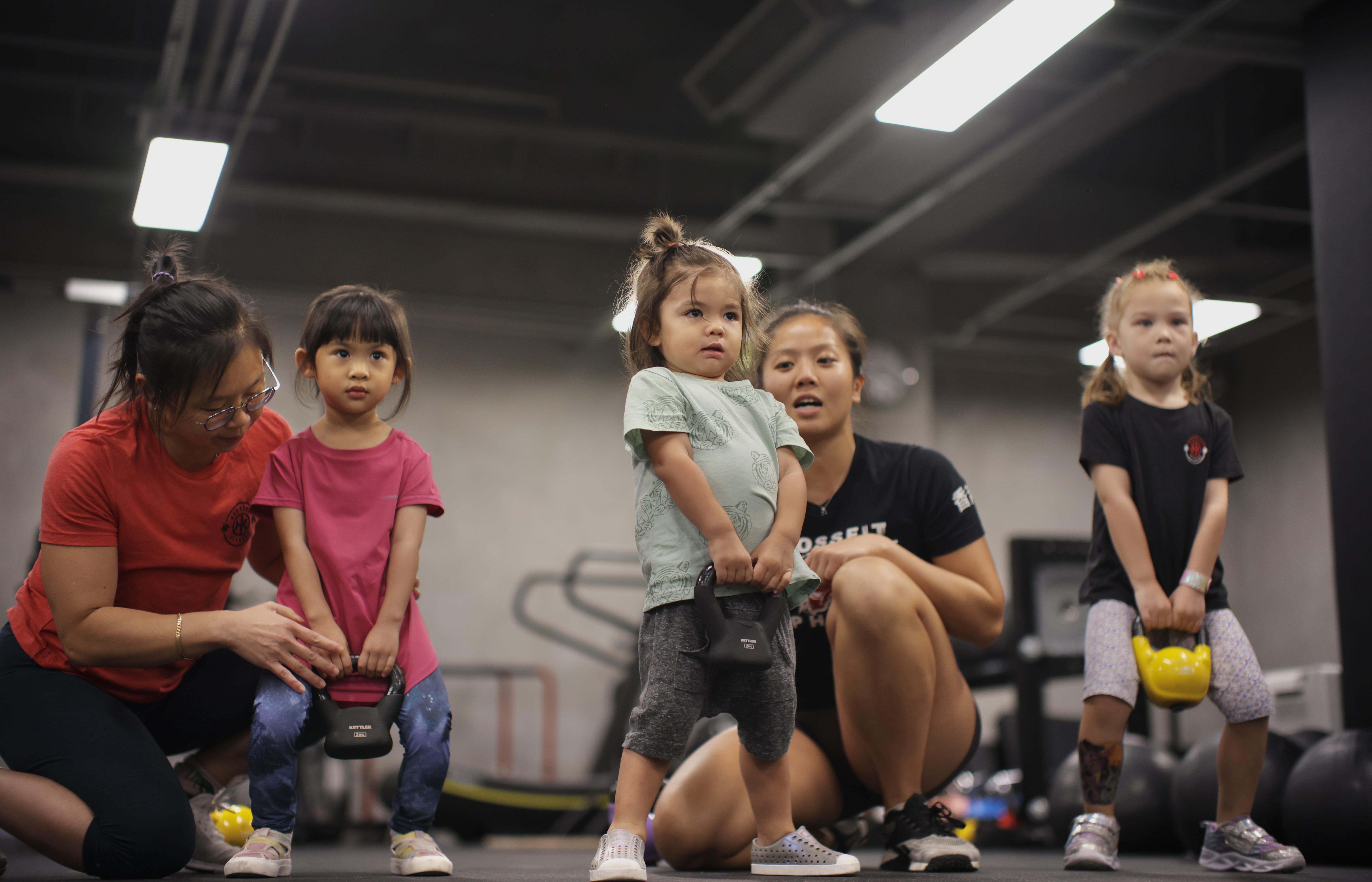 The CrossFit model, a specially curated fitness program for children offered
at Central’s Asphodel Fitness and Performance, involves weightlifting and aerobic exercises.
The CrossFit model, a specially curated fitness program for children offered
at Central’s Asphodel Fitness and Performance, involves weightlifting and aerobic exercises.
Over the last few years, the CrossFit model has acquired a dedicated following. Asphodel launched its children's program in 2017, offering classes once a week. At present, classes are held almost every day at its new outlet in Central. Of Asphodel's total clientele, 70 percent are children.
Ip says the CrossFit program is designed to help children acquire better mobility in the long run. The weight training is geared toward developing proper posture. The Brazilian jujitsu classes are expected to improve self-defense in a way that's gradual and safe as well as help inculcate discipline - two benefits sought after by parents of the attendees.
"At CrossFit you learn to do things that'll benefit whatever sport you decide to engage in later in life," Ip says. Since they started attending her class, Ip's students have, reportedly, become more receptive to the tasks they are set. "In Brazilian jujitsu, they learn to hold firm when something bad happens; they also learn to react, escape and think on their feet."
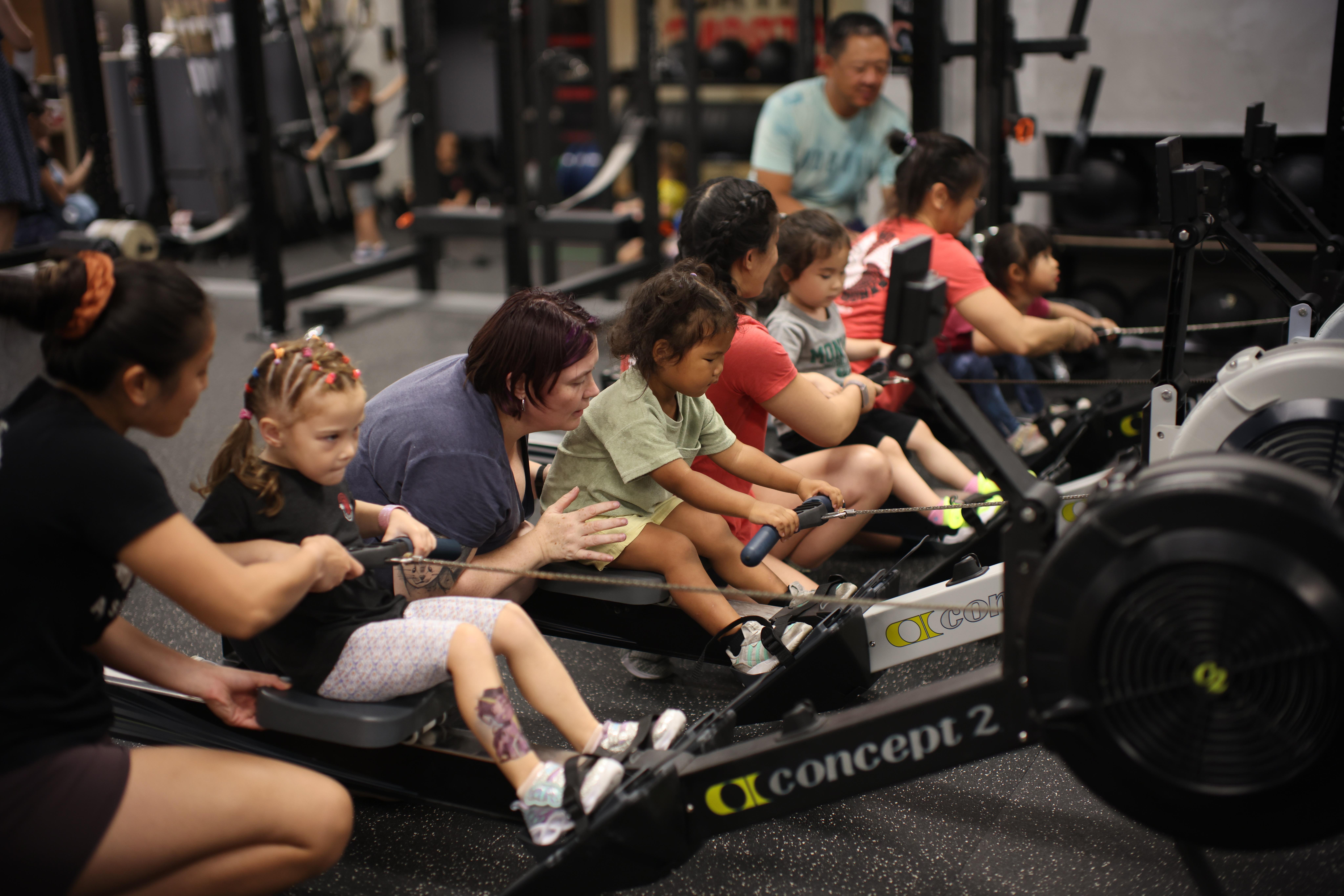 The CrossFit model, a specially curated fitness program for children offered
at Central’s Asphodel Fitness and Performance, involves weightlifting and aerobic exercises.
The CrossFit model, a specially curated fitness program for children offered
at Central’s Asphodel Fitness and Performance, involves weightlifting and aerobic exercises.
Martial arts, anyone?
Catherine Capio, assistant professor at the Education University of Hong Kong, is an expert in early-childhood motor development. She recommends that children do at least an hour of moderate to vigorous exercise every day, as long as it's supervised by a coach monitoring the child's physical limits and not just reducing the size and duration of activities more suitable for adults. For instance, while children start acquiring fundamental motor skills (like running and jumping) and manipulative skills (such as how to play with a ball) at 2 or 3 years old, such faculties aren't fully developed until they are 10.
Kids going to a gym is "fine as long as they are not getting injured," Capio says, wondering aloud whether the newfangled child-targeted fitness programs are indeed better than the simpler and time-tested free-hand exercise routines, or just one more fad, devised to earn a fast buck.
Not every fitness trainer has had the same luck with catching them young, though. Vincent Wong, co-owner of Muaytopia MuayThai.Fitness on Caine Road, had hoped that his 2010 summer camp would lead to a class exclusively for children, starting at age 7, but parents had their doubts, given the intensely combative nature of the sport, preferring to enroll their wards in martial arts programs with a belt-ranking system instead, not the least because such qualifications look good on a student's CV.
ALSO READ: A timeless legend
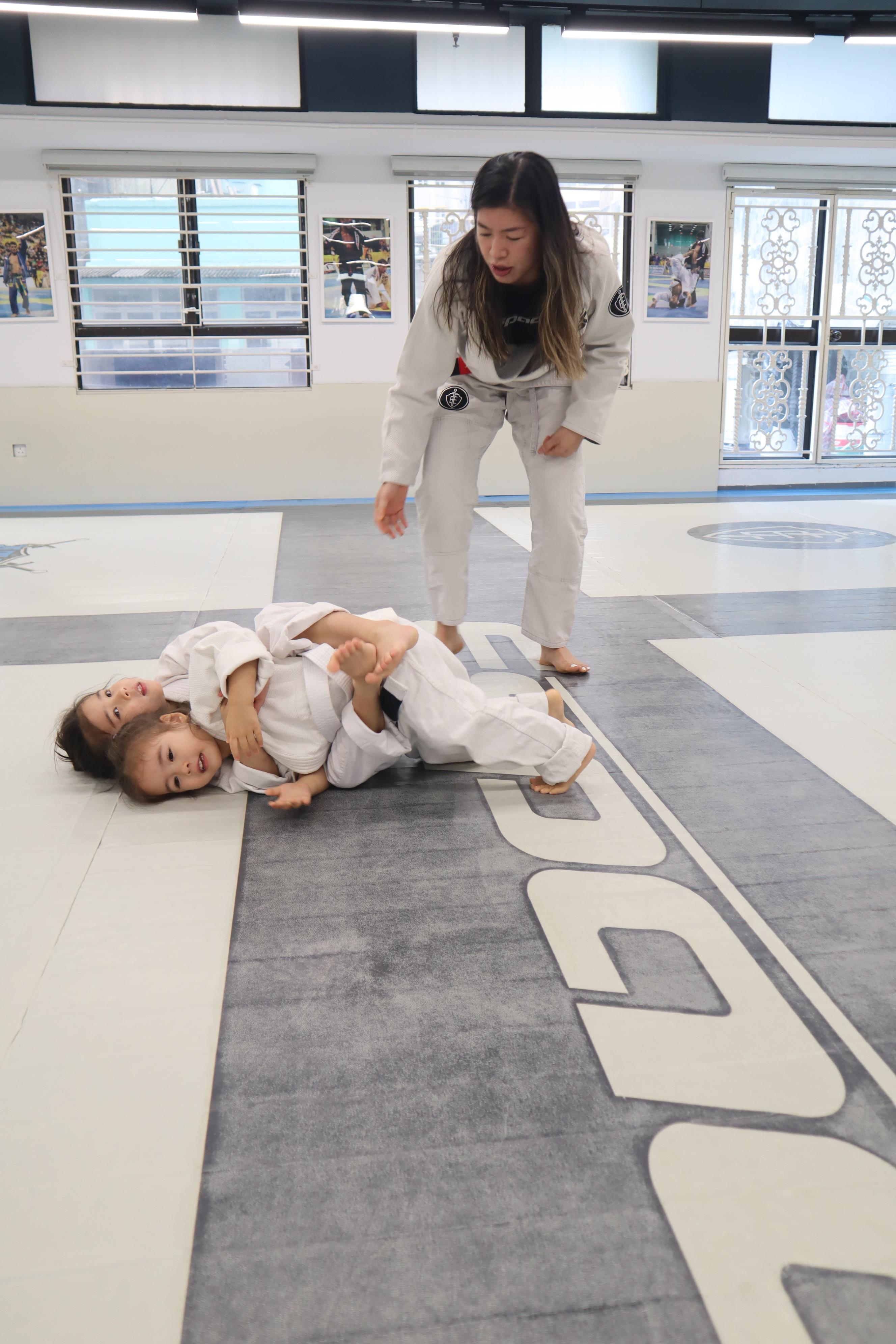 At Espada, a Brazilian jujitsu gym in Sheung Wan, instructor Joyce Ip spares no effort at
motivating her students to keep trying until they have perfected their moves.
At Espada, a Brazilian jujitsu gym in Sheung Wan, instructor Joyce Ip spares no effort at
motivating her students to keep trying until they have perfected their moves.
While the children learning Muay Thai in its place of origin aren't spared the hardcore training, Wong says that his school offers a far more toned-down program, though "not many parents understand this".
Children comprise around 10 percent of his clientele. At least once a week, they join Wong's adult students in class. In June, 13-year-old Kirstlyn came for a trial class. She was quiet at first, hiding behind the adults in the room but soon earned a fun nickname - Kwan Jeh, or Sister Kwan. The name came with all the support she could get to see her through the particularly tricky business of performing plank exercises. A month later, she returned to join the gym.
Gimmick or not, at the end of the day, child-targeted workout programs can be fun and a great way to get kids to step away from their digital devices. And if they're getting better at self-defense, and growing more confident in the bargain, what could be better?
Photos by China Daily's Calvin Ng and Edmond Tang


